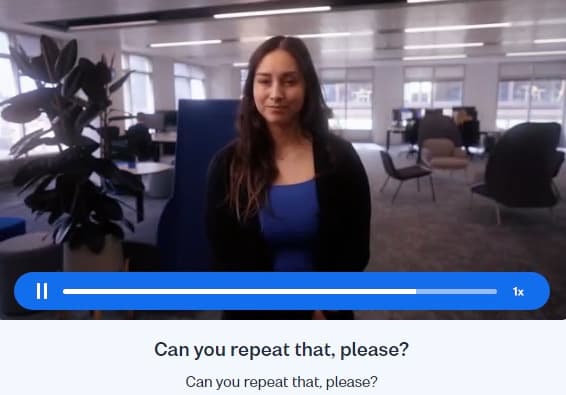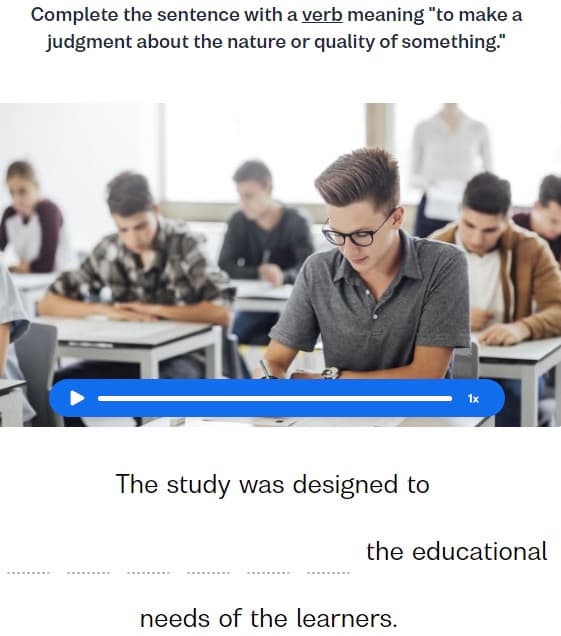I want to learn...
Author:

Barney Meekin
When you think of learning a language, one of the first things that comes to mind is probably vocabulary. It’s a huge — maybe the biggest — part of learning a language. The problem is, languages have hundreds of thousands of words. It can be overwhelming to think about how many words you need to be fluent.
Estimates say native speakers know between 15,000 and 20,000 word families (a word family includes a base word and all its variations, like “help,” “helped,” “helping,” “helper,” “helpful,” “unhelpful,” etc) and that to read a novel you need around 8,000. As language learners, even knowing the 2 or 3,000 most common word families is a fantastic achievement.
But that’s still a lot of words to learn (and it won’t happen overnight). One of the most effective ways to learn all those words (and grammar) is spaced repetition. In this guide, you’ll learn all about spaced repetition, its benefits, the science behind it, and how to use it in your language learning.
What is spaced repetition?
Spaced repetition is a learning technique where you review and memorize the vocabulary or grammar you’ve learned at set time intervals. That might sound fancy but it’s actually simple. It could be as simple as reviewing something every two weeks for three months. Or here’s an example schedule with gradually increasing intervals.
Learn a new word.
Review the word 1 day later.
Review the word again 7 days later.
Review the word again 14 days later.
Review the word again 20 days later.
Review the word again 35 days later.
This is not just plain old rote learning — the intervals make all the difference and are key to its effectiveness. The more comfortable you are with a word, the less you need to review it. With spaced repetition, you review difficult words more. But how do you decide the right intervals? Let’s explore a few of the common spaced repetition schedules.
The Leitner system
This classic approach uses physical or digital flashcards which go into different groups: Everyday study group, every other day study group, once a week study group, once a month study group, and so on.
All of your words start in the first group. Test yourself and if you remember the word, move the flashcard to the next group. If you follow this, the words you struggle with stay in the first two boxes and you review them more often. The words you’re comfortable with move along the groups, and you review them less frequently.
Pro tip: One way to organize this is by giving each group a box that you line up on your desk or windowsill. New words start in the box on the left. If you don’t remember a word, it stays in the same box. If you do remember it, move it one box to the right.
Gradually increasing intervals
This schedule has increasing time intervals between reviews. For example, you might review new vocabulary after 1 day, then 3 days, 1 week, 2 weeks, and so on. Every time you successfully remember the word, the next interval gets longer.
Adaptive algorithms
Busuu and other language learning apps use adaptive algorithms that personalize the spaced repetition schedule depending on how well you perform. So words that you easily remember automatically move to a schedule with longer intervals. But words that you struggle to remember pop up more regularly. The benefit of using AI technology to help is everything is automatic. The algorithm decides which words pop up for review, and how long after the last review.
It’s important to note that there’s no such thing as an optimal schedule. You have your own learning style and preferences that you need to consider. Experiment with the different kinds of spaced repetition and find a schedule that works for you.
The science behind spaced repetition
Looking at the science behind spaced repetition shows why it’s so effective. Let’s take a look at what the research says.
Memory consolidation
Spaced repetition fits in with the natural workings of our memory. When you learn new information, at first it goes into your short-term memory. But information that stays in short-term memory is easily forgotten so it’s important to move it into long-term memory. This is where spaced repetition comes into play. Reviewing information over spaced intervals moves it to your long-term memory, a process known as consolidation.
Research shows that learning spread over several sessions (instead of one) leads to long-term memories.
Forgetting curve theory
The concept of spaced repetition is closely linked to the forgetting curve theory. It says that just after learning something, you might forget it quickly. And that when you don’t try to recall or retain information, you forget it gradually over time. So when you review — and try to recall — information repeatedly at intervals you fight against the forgetting curve.
Active recall and the testing effect
Spaced repetition isn’t a passive learning method. You need to actively use your memory, checking your understanding again and again until you know the word. Research shows that active recall (deliberately trying to remember information) and repeated testing helps long-term retention of information. Active recall and repeated testing, by the way, are key parts of spaced repetition.
Spaced repetition and language learning
Let’s take a look at how spaced repetition can help you learn a language.
Vocabulary acquisition
Spaced repetition has been most effective in helping people learn vocabulary. Reviewing words at intervals can significantly increase your vocabulary without being overwhelmed. Research shows that spaced repetition leads to learning long-term vocabulary gains.
Grammar mastery
But it’s not only vocabulary that benefits from spaced repetition. You can also use it to reinforce grammar rules. Review grammar concepts in the same way you review vocabulary and grammar structures will go into your long-term memory.
Busuu and spaced repetition
Spaced repetition is a big part of Busuu’s effectiveness. To help you remember vocabulary and grammar — and to fight that pesky forgetting curve — Busuu uses machine learning technology. Busuu AI understands your pattern of learning and remembering, and your strengths and weaknesses. It uses this information to create a personalized learning experience just for you.
With Busuu you get access to spaced repetition algorithms that fight against memory loss. This means words you’ve learned are repeated again and again at different intervals. Busuu Vocabulary Trainer automatically saves the words you come across in your courses. You can then take quizzes to see which words you don’t remember. If you forget some, don’t worry — you can use the Strengthen Vocabulary feature to review difficult words until you remember them.
Busuu Smart Review uses spaced repetition to help you remember grammar and vocabulary. The AI knows what words and grammar you struggle with — it compares your native language to the one you’re learning to see if there are any natural difficulties. And it tracks what you learn, what you remember, and what you forget. Smart Review helps you study your new language smarter. No more wondering about your strengths and weaknesses. No more guessing what you should study and when. Smart Review figures all that out so you get a personalized language course.
Repetition is key for language learning
Spaced repetition and AI algorithms might sound confusing but actually, it’s a simple way to learn a language. You repeat grammar and vocabulary until it’s safe in your long-term memory — that’s it.
Research shows that repetition and testing of spaced repetition is an effective way to do this. Whether you do it the old-fashioned way with pieces of paper, or with modern AI technology, is up to you. Experiment. Find what works for you. Try the different time interval schedules to see which you like. Give it a shot with paper flashcards, and give it a shot with AI-powered tools like Busuu Smart Review.
Like language learning in general, there’s no one best way to do spaced repetition. Find what works, and stick to it. If you’re consistent, your hard work will pay off.
AUTHOR

Barney Meekin
Newlanguages


